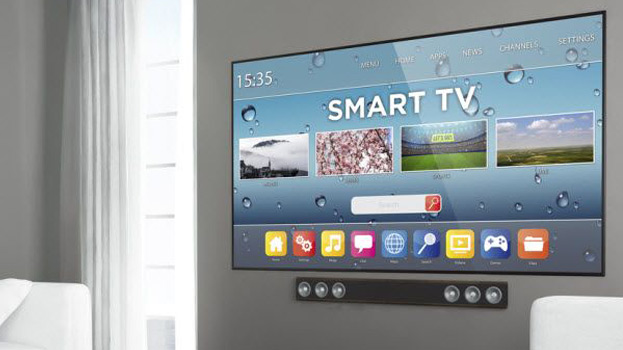IT Solutions: Wi-Fi vs. LTE could be the start of a mobile rollercoaster
More mobile services will start sharing spectrum, so your speeds could vary more
The long fight over LTE networks sharing frequencies with Wi-Fi may be just the first of many battles as device makers and service providers try to make the most of the limited available spectrum.
Around the world, regulators and industry are working on how to let different kinds of networks use the same spectrum. The new techniques and policies they use should lead to better mobile performance in some areas, but it’s also likely that wireless performance will fluctuate more as you move around.
LTE-U has grabbed headlines because it involves licensed carriers using some of the channels that consumers depend on for Wi-Fi service, which often is free or runs on users’ own routers. Wi-Fi supporters cried foul last year after Qualcomm and some U.S. carriers proposed the technology, and it took until last month for the two sides to reach an apparent peace agreement.
LTE-U products could start getting certified soon with a battery of coexistence tests. But this won’t be the last time mobile users find the services they rely on forced to coexist with other technologies. Growing demand for wireless capacity, plus the runaway success of Wi-Fi as an example of a new approach to spectrum that worked, are bringing more players to the table in many cases.
Though new technologies make spectrum-sharing more feasible, exactly how these schemes will play out isn’t clear yet.
“It’s a very crowded world, and we are adjusting our expectations for how these things are going to work together“, said Harold Feld, senior vice president of the U.S. consumer advocacy group Public Knowledge, on a recent LTE-U panel discussion.
Interference issues used to be relatively simple, Feld said. If one operator held a license, anyone else had to get off the frequency. If the spectrum was unlicensed, every user had to accept interference and not do anything to monopolize the band.
LTE-U raised new questions, because even though the 5.8GHz band where it operates is unlicensed and was set aside to allow room for innovation, this wasn’t a question of two small, experimental technologies vying for space. Millions depend on Wi-Fi today, and at least two major U.S. carriers – Verizon and T-Mobile – want to roll out LTE-U to supplement massive cellular networks.
Wi-Fi and LTE use different methods to keep order among wireless channels. If unmodified LTE networks were unleashed in an unlicensed band, the effect would be “devastating“, said Patrick Welsh, Verizon’s assistant vice president for federal regulatory affairs, during a panel discussion last month.
Verizon wanted to use the 5.8GHz band for extra capacity, so it brought together engineers from its equipment suppliers to develop LTE-U, Welsh said. That technology is available for use primarily in the U.S., South Korea, China and India.
To do the same thing, carriers in most other countries had to wait for another technology called LAA (Licensed Assisted Access), which was being standardized by LTE’s overseers at the 3GPP and took longer to finish. It uses different coexistence techniques that most Wi-Fi backers think are safer. Some U.S. carriers are planning eventually to use LAA, too.
Meanwhile, vendors and service providers are jockeying for position on several other frequency bands that may host multiple services.
The 3.5GHz band: The U.S., Australia, the U.K., and other countries around the world want to open up frequencies in the 3.5GHz band to mobile devices. Just adding this band to the channels available for Wi-Fi wouldn’t work because the exact frequencies available in each country are different.
In some cases, mobile users of 3.5GHz will have to share the band with existing users, such as the U.S. Department of Defense. In the U.S. case, the military would get first priority in the few areas where it uses the spectrum, service providers could get a new kind of license in some local areas, and other users would get in line behind them.
Millimeter-wave bands: Millimeter-wave bands targeted for use with future 5G networks also seem to be bound for complicated sets of uses. In particular, the 50GHz to 70GHz frequencies are partly unlicensed and partly “lightly licensed” to incumbent users in some countries, Marshall said. Unlicensed spectrum, in general, is expected to play a big role in 5G, though exactly how won’t be totally clear for a few years.
DSRC band: Regulators in both the U.S. and Europe have grappled with coexistence between Wi-Fi and DSRC (Dedicated Short-Range Communications) systems that use frequencies around 5.9GHz. These include systems for cars to communicate with each other and with nearby objects like tollbooths, though adoption has been limited, especially in the U.S. In-car Wi-Fi systems have been accused of hurting DSRC performance, and in the U.S. there is a drive to force DSRC to share its spectrum with Wi-Fi.
What’s missing, at least in the U.S., is a standard way of defining harmful interference between technologies that are bound to overlap with each other because they use the same spectrum, Public Knowledge’s Feld said. There should also be a standard framework for settling fights over shared spectrum so the Federal Communications Commission, or industries the FCC prods to solve their own disputes, don’t have to reinvent the wheel every time, he said.
Opening more frequencies for mobile Internet access should be good for users overall, analyst Marshall said. He doesn’t expect performance hits on Wi-Fi from LTE-U, for example.
But as consumers increasingly get their mobile access over frequencies shared by numerous technologies, the boost that comes from the extra spectrum may be a fleeting thrill, Marshall said.
“You’re talking about very, very high capacity if you’ve got that spectrum available“, Marshall said. “If you haven’t, you push down to a lower rate.”
For more information and a personalized IT Solutions business offer, please contact us.
Source: www.computerworld.com



